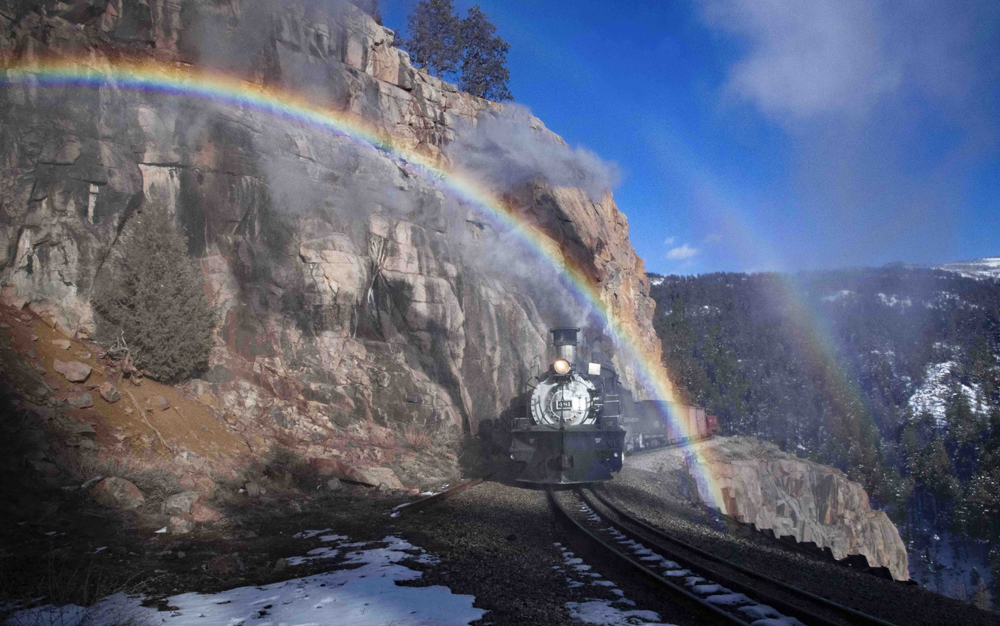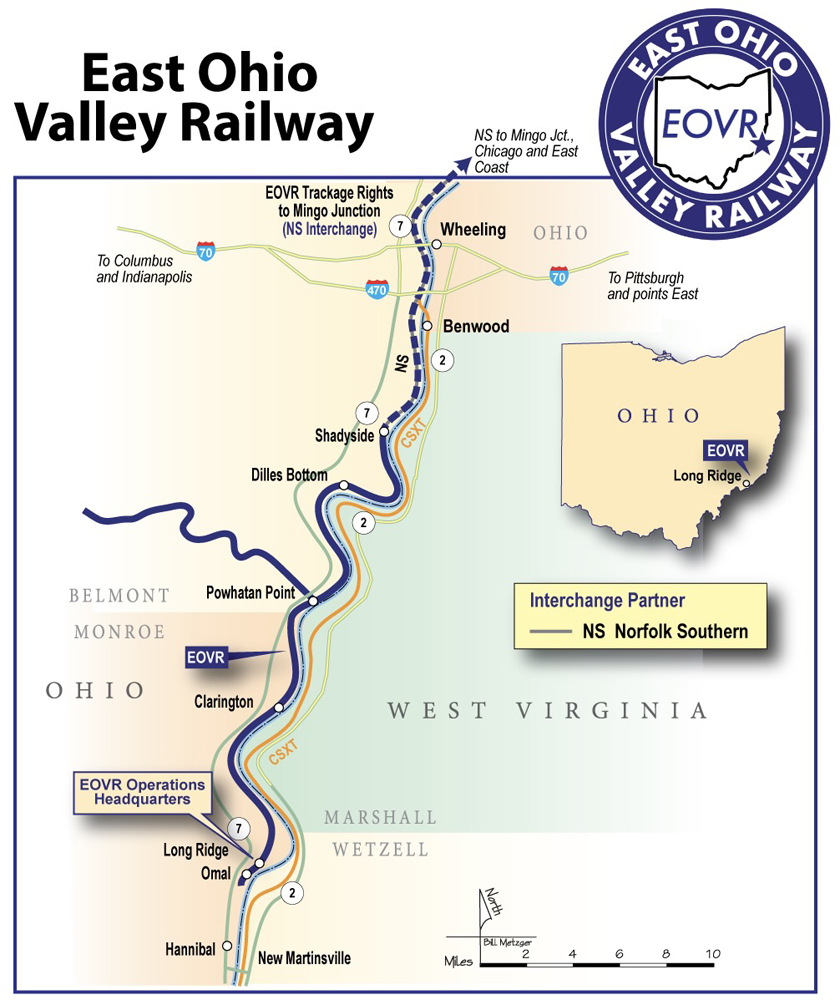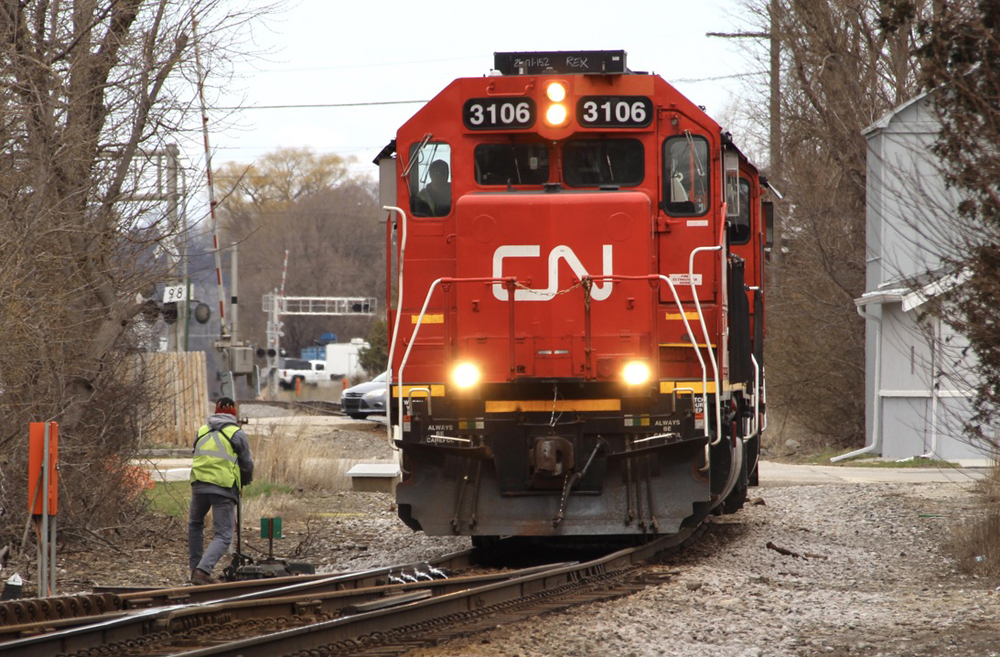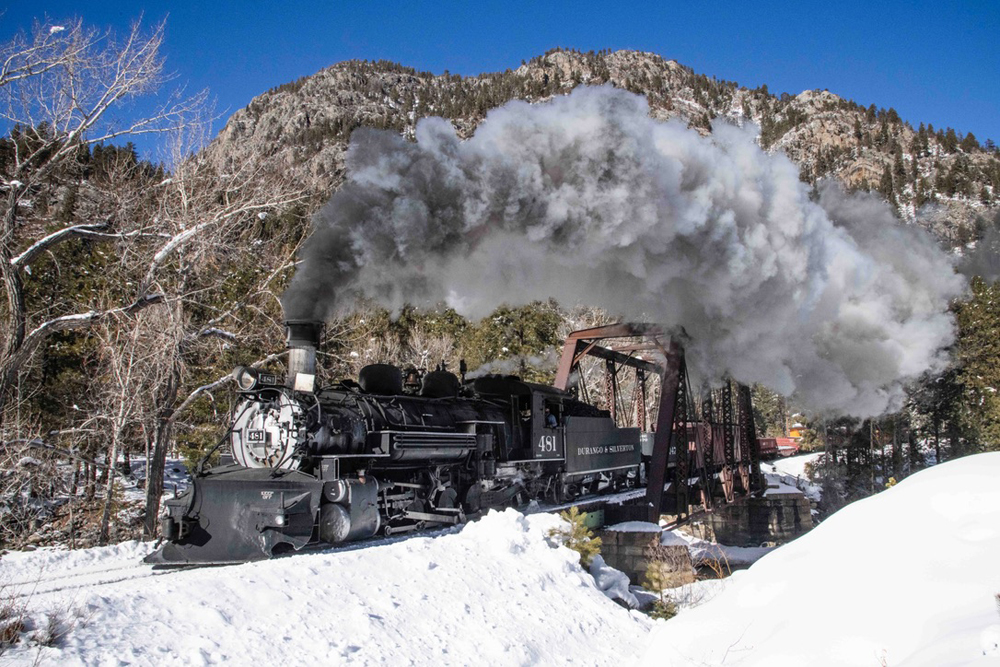
DURANGO, Colo. – Last weekend’s coal-fired photographer’s snow-train special marked the end of an era as the Durango & Silverton Narrow Gauge Railroad moves to complete its conversion to recycled motor oil as a fuel for its fleet of a half-dozen active steam locomotives.
The all-day excursion was powered by 2-8-2 No. 481 (Baldwin Locomotive Works, 1925), a former Rio Grande Class K-36 Mikado that is D&S’s only remaining active coal-burning locomotive. Carrying 64 passengers on Sunday (Feb. 11), the 11-car mixed train comprised a water car, two boxcars, two dump gondolas, a flat car, concession car, two coaches, an open-air gondola, and caboose 0540.
It shared the railroad that day with D&S’s regularly scheduled winter passenger train, pulled by oil-burning No. 480 (BLW, 1925), another Class K-36 engine.
“We’ve been on a long process of converting all of our locomotives to burn oil,” said Russell Heerdt, special events coordinator and a qualified D&SNG engineer and fireman. “We’re down to the last one that’s operational. We knew this day was going to come.
“We thought maybe we’d keep it through the end of its 1,472 (-day boiler certification) as a coal-burning engine,” but “business is at a point where we need every single locomotive.”
Heavy ridership
Durango & Silverton has just posted two record-ridership years, 219,000 passengers in 2022 and 245,000 in 2023. During peak season, the company runs three trains a day: a multiple-unit, two-diesel 12-car passenger train to Silverton (45 miles), a doubleheaded 14-car steam train to Silverton, and a single steam engine on a 12- or 13-car train to Cascade Canyon, 26 miles, or roughly halfway to Silverton. Handling 1,300 passengers a day requires most of, or all 40 of, the railroad’s cars to be available.
“The post-COVID traffic is where we‘re seeing this huge influx,” said Heerdt. Before the pandemic, the road carried 180,000 to 200,000 passengers a year.
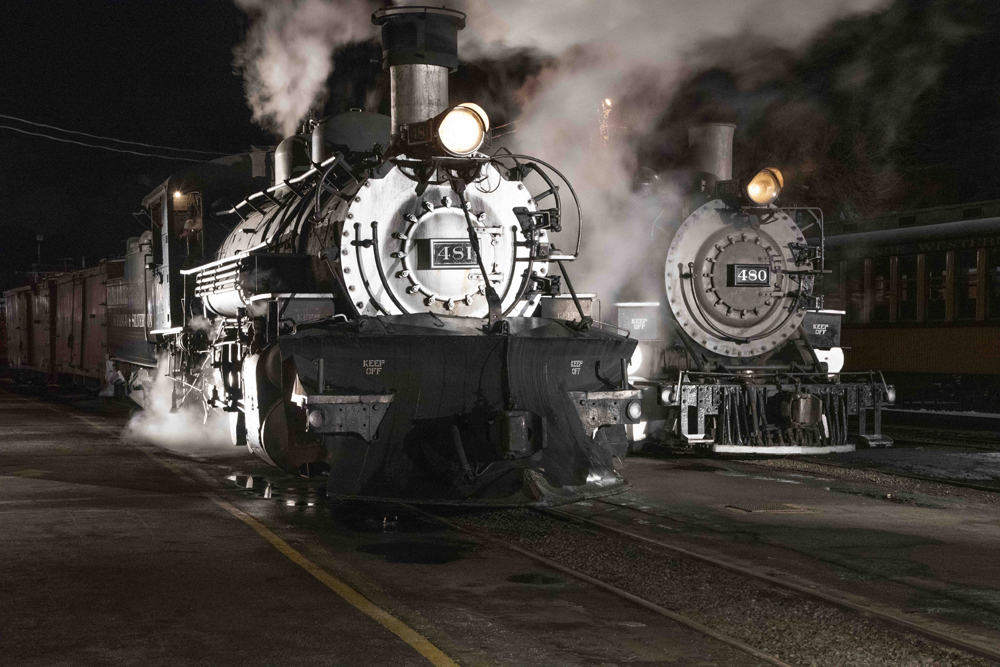
D&SNG owns nine ex-Rio Grande Mikados of three sizes. Among them, five have been converted and No. 481 is next in line, a process that Heerdt said will begin this spring and take a year to a year and a half. The other three are stored out of service, two of which are in line for future restoration. The first to be converted was Class K-37 engine No. 493 (BLW 1908, rebuilt by Rio Grande in 1928), which entered service in 2020.
A changeover to oil began after wildfires in 2018 damaged 54,000 acres of forest land adjacent to the right of way through the rugged Rockies.
Federal officials blamed the railroad, which was then using exclusively coal-fired engines, which can spread hot sparks or embers. Local businesses were forced to suspend operation, as was D&SNG. The cause was never proven conclusively, but the railroad made a business decision to opt for oil fuel to eliminate any doubt about, or disruption to, future operations.
Long history of photographers’ excursions
D&SNG has run a winter photo special for more than 20 years, Heerdt noted. “This was the last photo excursion with a Durango & Silverton coal-burning engine,” he said, adding that the railroad will still allow visiting locomotives that burn solid fuel, either coal or wood.
Like two other steam-powered Colorado narrow-gauge lines, Cumbres & Toltec Scenic and Colorado Railroad Museum, D&SNG bought its bituminous coal from the King II Mine at Hesperus, Colo., about 15 miles west of Durango. Officials of the company’s new GCC Energy management advised the railroads that its business plan might make it uneconomical to continue supplying coal in the size and type needed for locomotive fuel.
“In the quantities we use, it’s not enough to sustain that part of [their] business,” Heerdt said. “We’re getting ahead of the game before that source runs out.”
On a round trip over the entire 45-mile line to Silverton, he said, a fireman shovels 6½ tons of coal – 4 to 5 tons, nonstop, on the way up, and 1 to 2 tons on the way down. Each scoop weighs about 25 pounds. From Durango, trains climb 2,800 feet to reach Silverton, which sits at 9,300 feet.
The march of progress
Firemen are of mixed opinions about the change, Heerdt said. A D&SNG employee for nine years, he fired for three years before oil conversion began and believes that the practice could become a lost skill.
“Burning coal . . . you got to Silverton on the back of your fireman,” he said. Firemen had to take into account “different factors that are changing constantly. [Oil] takes that art out of it.”
On the other hand, Heerdt also works in the railroad’s machine shop, where the locomotives are maintained, and sees the practical side, saying conversion is “in the best interest of the railroad and the steam locomotives. It’s one of those things that makes sense.”
Burning recycled motor oil, he said, is “not cheaper than coal, but we get it for $1.30 a gallon. It’s more expensive per mile, but we don’t need an overnight crew [to tend the fire] every single day, and maintenance on running gear is less,” with, for example, no abrasive cinders to damage finely tuned bearing surfaces.
